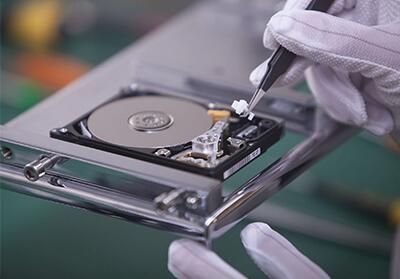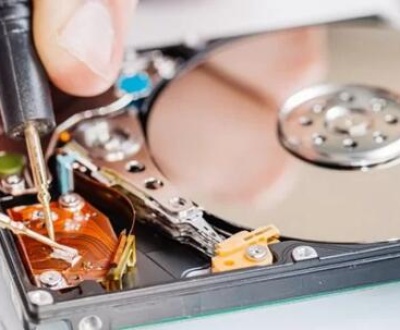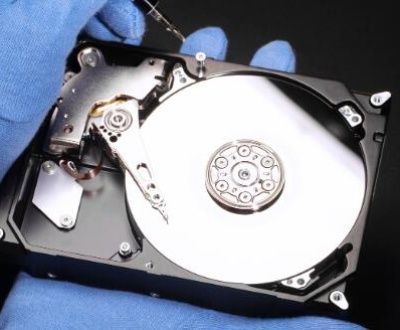External hard drives are essential tools for data storage and backup, providing a convenient way to keep important files safe and accessible. However, like any electronic device, they can malfunction due to various reasons, such as physical damage, logical errors, or connection issues. In a bustling city like Dubai, where businesses rely heavily on data storage, knowing how to diagnose and repair external hard drive issues is crucial. This guide will explore common problems, troubleshooting steps, and options for professional repair services available in Dubai.
1. External Hard Drives
Before diving into repairs, it’s essential to understand how external hard drives work.
What is an External Hard Drive?
An external hard drive is a portable data storage device that connects to a computer via USB, Thunderbolt, or eSATA ports. They are commonly used for:
Data Backup: Protecting files against loss due to system crashes or corruption.
File Transfer: Easily moving large files between computers.
Media Storage: Keeping photos, videos, and music accessible without occupying internal storage space.
External hard drives can be either HDDs (Hard Disk Drives), which use spinning disks to read/write data, or SSDs (Solid State Drives), which use flash memory for faster access and durability.

2. Common Issues with External Hard Drives
External hard drives can experience several issues that may require troubleshooting or repair. Here are some common problems:
a. Physical Damage
Dropping the Drive: Accidental falls can damage the internal components.
Water Exposure: Liquid spills can lead to short circuits and data loss.
b. Connection Problems
Loose Connections: A damaged USB or Thunderbolt cable can prevent the drive from connecting to the computer.
Port Issues: A malfunctioning port on the computer can also cause connection problems.
c. Logical Errors
File System Corruption: Improper ejection of the drive or sudden power loss can lead to file system errors.
Bad Sectors: Over time, HDDs may develop bad sectors that can affect data retrieval.
d. Power Issues
Insufficient Power Supply: Some external drives require more power than the USB port can provide, leading to malfunction.
Power Cable Damage: A damaged power adapter or cable can prevent the drive from functioning.
3. Initial Troubleshooting Steps
Before seeking professional help, there are several troubleshooting steps you can perform to identify and potentially resolve issues with your external hard drive.
Step 1: Check the Connections
Inspect Cables: Ensure that the USB or power cables are securely connected and not damaged. Try using a different cable if available.
Change Ports: Connect the external hard drive to a different USB port on your computer to rule out port issues.
Step 2: Restart Your Computer
Sometimes, a simple restart can resolve connectivity issues. Reboot your system and see if the external hard drive is recognized afterward.
Step 3: Listen for Sounds
If your external hard drive is making unusual sounds, such as clicking or grinding, it may indicate physical damage. If the drive is silent, it could suggest power or connection issues.
Step 4: Check Disk Management (Windows)
Right-click on the Start menu and select “Disk Management.”
Look for your external hard drive. If it appears as unallocated or unformatted, it may require partitioning or formatting.
Step 5: Use Disk Utility (macOS)
Open Disk Utility from Applications > Utilities.
Check if the external drive appears. If it does, try running “First Aid” to repair any file system errors.
4. When to Seek Professional Help
If the troubleshooting steps do not resolve the issue, it may be time to seek professional repair services. Here are some signs that professional help is needed:
Inaccessible Data: If you cannot access your files even after troubleshooting, consider a data recovery specialist.
Physical Damage: If there’s visible damage or unusual sounds coming from the drive, do not attempt to open it yourself; this can cause further damage.
Recurring Issues: Frequent problems with the drive may indicate a failing unit, necessitating professional diagnostics.
5. Finding Repair Services in Dubai
Dubai is home to several reputable data recovery and repair services for external hard drives. Here are some steps to find a suitable provider:
Step 1: Online Research
Search Engines: Use Google to find local repair services. Look for keywords like “external hard drive repair Dubai” or “data recovery services Dubai.”
Reviews and Ratings: Check customer reviews on platforms like Google Reviews, Yelp, or social media. This will help gauge the reliability of a service.
Step 2: Ask for Recommendations
Local Forums: Engage in local online forums or social media groups to ask for recommendations from residents who have used similar services.
Word of Mouth: Ask friends or colleagues if they can recommend a trustworthy repair service.
Step 3: Contact Multiple Services
Inquire About Services: Reach out to several repair services to ask about their capabilities, pricing, and turnaround time.
Discuss Your Issue: Provide a detailed description of the problem to get accurate quotes and advice.
6. What to Expect During the Repair Process
When you take your external hard drive to a repair service, here’s what typically happens:
a. Initial Diagnostics
Technicians will first conduct an initial assessment to determine the nature of the problem. This may involve:
Running diagnostic software to check for logical errors.
Physically inspecting the drive for damage.
b. Data Recovery (if applicable)
If the issue is severe, such as data corruption or failure, data recovery might be performed. This process typically includes:
Creating a disk image of the drive to prevent further damage during recovery attempts.
Using specialized software to recover lost or inaccessible files.
c. Repair or Replacement
Based on the diagnostics, the technician will recommend either repairing the drive or replacing it:
Repairs: This may involve replacing damaged components, such as the drive casing, USB port, or power supply.
Replacement: If the drive is beyond repair, technicians may recommend purchasing a new drive.
7. Preventative Measures for the Future
After your external hard drive is repaired, it’s essential to take steps to prevent future issues. Here are some tips:
a. Regular Backups
Backup Regularly: Use backup software or cloud services to ensure your data is always protected.
Multiple Backups: Keep copies of important files in multiple locations (e.g., cloud and external drives).
b. Safe Ejection
Always safely eject your external hard drive before disconnecting it from your computer to prevent file system corruption.
c. Handle with Care
Physical Protection: Use a protective case for your external hard drive, especially if you travel frequently.
Avoid Extreme Conditions: Keep the drive away from extreme temperatures, moisture, and magnetic fields.
About us and this blog
Panda Assistant is built on the latest data recovery algorithms, ensuring that no file is too damaged, too lost, or too corrupted to be recovered.
Request a free quote
We believe that data recovery shouldn’t be a daunting task. That’s why we’ve designed Panda Assistant to be as easy to use as it is powerful. With a few clicks, you can initiate a scan, preview recoverable files, and restore your data all within a matter of minutes.
Subscribe to our newsletter!
More from our blog
See all postsRecent Posts
- Data recovery salt lake city utah 2025-04-18
- Data recovery sacramento 2025-04-18
- Data recovery miami 2025-04-18

 Try lt Free
Try lt Free Recovery success rate of up to
Recovery success rate of up to









